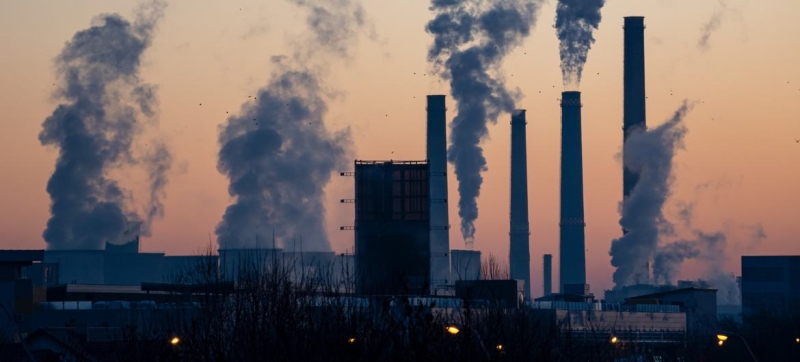
Fossil fuel power plants pollute the air with greenhouse gases, which lead to climate change. UN report: New climate pledges only marginally improve global temperature forecasts Climate and Environment
New climate commitments under the Paris Agreement have only modestly improved the forecast for rising global temperatures this century, according to an analysis by the United Nations Environment Program (UNEP). Climate threats continue to increase.
General indicators have remained almost unchanged
The 2025 Emissions Gap Report says that if Nationally Determined Emissions Reduction Contributions (NDCs) are fully implemented, global temperatures will rise by 2.3 to 2.5 degrees Celsius above pre-industrial levels by the end of the 21st century, up from last year’s forecast of 2.6 to 2.8 degrees. Celsius.
However, the change in forecasts is partly due to changes in calculation methods, as well as the upcoming US withdrawal from the Paris Climate Agreement. Thus, the new commitments of countries had almost no impact on the overall indicators. The world remains far from the Paris Agreement’s goal of keeping warming to within two degrees Celsius while aiming to keep warming to 1.5 degrees Celsius.
Unprecedented emissions cuts needed
“Even with current commitments, we are still facing climate catastrophe,” said UN Secretary-General António Guterres.
The report’s authors warn that the average global temperature rise will exceed 1.5 degrees Celsius over several decades, at least temporarily. This excess will be difficult to reverse. Much larger emissions cuts will be needed at a much faster pace to minimize damage to ecosystems, economies and human health.
“Countries have already tried three times to meet the promises of the Paris Agreement and have never been able to achieve this goal,” said UNEP Executive Director Inger Andersen.
“National climate plans have led to some progress, but it is too slow. “We still need unprecedented emissions reductions in a short time frame and in the face of an increasingly complex geopolitical situation,” she added. flows of misinformation and the need for joint action
By 30 September 2025, only 60 parties to the Paris Agreement, accounting for 63 percent of global emissions, had submitted new emissions reduction targets for 2035, according to UNEP. Yet most countries are not on track to even meet their 2030 targets.
To align the warming trajectory with the goals of the Paris Agreement, sharp and unprecedented emissions cuts are needed, which are becoming increasingly unattainable. In 2024, emissions increased by 2.3 percent.
Full implementation of all NDCs would reduce global emissions in 2035 by about 15 percent compared to 2019, but this is still not enough: a 35 percent reduction is required to keep warming to within 2 degrees Celsius, and a 55 percent reduction to keep warming to within 1.5 degrees Celsius.
Solutions exist
Nevertheless, UNEP experts emphasize that the goal of keeping warming to within 1.5 degrees Celsius remains critical.
“Every day it becomes more difficult to ensure a livable future. But this is not a reason to give up. This is a reason to intensify efforts and accelerate action,” said António Guterres.
“Solutions have been around for a long time. From rapid growth in renewable energy to cutting methane emissions, we know what needs to be done,” said Inger Andersen.
The report also notes that since the Paris Agreement, global temperature rise projections have dropped from 3-3.5 degrees Celsius to the current 2.3-2.5 degrees Celsius, but real change requires political will and reform of the international financial architecture.
A special role is given to the G20 countries, which account for 77 percent of global emissions. However, their combined performance still falls short of even 2030 targets: their emissions rose 0.7 percent in 2024.
